Red Fort
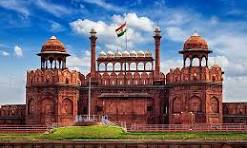
Builders constructed the entire fort of the great Red Fort, also known as Lal Quila, with red sandstone. It is an icon of our country and is considered a world heritage site due to its beautiful architecture and association with the Mughal dynasty.The fifth emperor, Shahajahan, constructed it around 1639, and it covers an area of 254 acres of land. When Shahajahan decided to shift his capital from Agra to Delhi, he built this monument.
The Red Fort (Lal Qila) is one of India’s most iconic monuments, symbolizing the country’s rich history and architectural grandeur. Located in Old Delhi, it was commissioned by the Mughal Emperor Shah Jahan in 1638 when he decided to shift his capital from Agra to Delhi. The fort was completed in 1648 and served as the main residence of the Mughal emperors for nearly 200 years.
Architecture and Design
The Red Fort is an outstanding example of Mughal architecture, with influences from Persian, Timurid, and Indian styles. It was designed by architect Ustad Ahmad Lahori, the same person who designed the Taj Mahal. Constructed using red sandstone, the fort spans over 254 acres and is enclosed by massive walls, which range from 18 meters (on the riverside) to 33 meters (on the city side) in height.
The fort has several impressive structures, including:
- Lahori Gate: The main entrance, used for India’s Independence Day celebrations. The Lahori Gate is the main entrance to the Red Fort in Delhi. The fort is approached through a covered street flanked by arcaded apartments called the Chhatta Chowk. Situated on the western wall of the fort, the gate received its name because it led to the city of Lahore. The secondary entrance is the Delhi Gate.
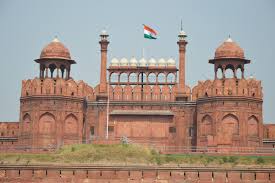
- Delhi Gate: Another important entrance. Delhi Gate is the southern gate in the historic walled city of Delhi, or Shahjahanabad in 1638 AD. The gate links the New Delhi city with the old walled city of Delhi. It stands in the middle of the road, at the end of Netaji Subhash Chandra Road (or Netaji Subhash Marg), at the edge of Daryaganj.
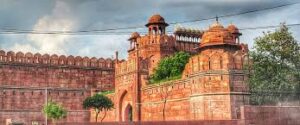
- Diwan-i-Aam: The Hall of Public Audience where the emperor met commoners. The Diwan-i-Am, or Hall of Audience, is a building in the Red Fort of Delhi where the Mughal emperor Shah Jahan and his successors received members of the general public and heard their grievances.
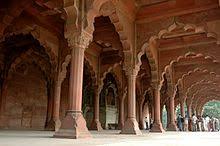
- Diwan-i-Khas: The Hall of Private Audience, where important discussions took place.The Diwan-i-Khas, or Hall of Private Audiences, was a chamber in the Red Fort of Delhi built-in 1648 as a location for receptions. It was the location where the Mughal Emperor Shah Jahan received courtiers and state guests. It was also known as the Shah Mahal.
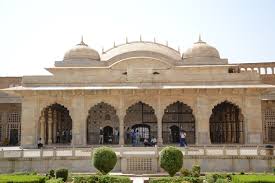
- Moti Masjid: A small but beautiful mosque built by Emperor Aurangzeb. ‘Pearl mosque’) is a 17th-century historical mosque, not open for worship, inside the Red Fort complex in North Delhi, India. It was built by Mughal emperor Aurangzeb, damaged during the Siege of Delhi, and subsequently restored by the British. Named for its white marble, the mosque features ornate floral carvings.
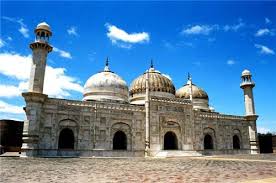
- Rang Mahal: A palace adorned with intricate decorations for the royal women. The Rang Mahal or Palace of Colour is located in the Red Fort, Delhi. It originally served as a part of the imperial harem. It was the part of the palace in which female members of the royal family could rest at. It was known as the Palace of Distinction during the rule of Shah Jahan.
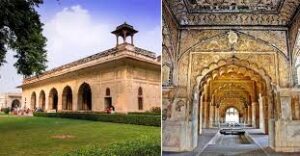
The fort was originally adorned with precious stones, silver ceilings, and ornate gardens, but many treasures were looted, especially during the British invasion in 1857.
Historical Significance
The Red Fort witnessed several historic events, including the fall of the Mughal Empire after the British took control in 1857. During India’s freedom struggle, it became a powerful symbol of resistance. On August 15, 1947, Pandit Jawaharlal Nehru delivered India’s first Independence Day speech from its ramparts, a tradition that continues every year.
UNESCO World Heritage Site & Tourism
In 2007, the Red Fort was designated a UNESCO World Heritage Site for its cultural importance. Today, it is a major tourist attraction, offering visitors a glimpse into India’s glorious past. The Sound and Light Show held in the evenings narrates its history beautifully.
History of Red fort
The first independence battle was fought in 1857 and the Red fort was ruled by Bahadur Shaha Jafar II was arrested and the British conquered the fort. During the British era they used this fort as their residence and they constructed many rooms in the fort. By the arrest of last emperor Bahadur Shaha Jafar the mughal dynasty came to an end.
Architecture of the red fort
The Red fort was the residence of Shahajahan. It used to have 2 main parts i.e. Diwan-e-khas and Diwan-e-aam where Shahajahan used to meet. Diwan-e-khas was an official meeting place where only official ceremonies or the personal meetings used to be organized and the other Diwan-e-aam was open for all citizens. The fort has many entrances. The wall’s height is 75 meters and it has beautiful geometrical gardens, the fort has enormous carvings of flowers, animals, etc.
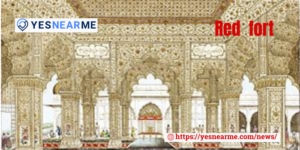
Diwan-i-Khas- Source: Bharatpedia
More places to explore in fort-
Mumtaz Mahal: Khas Mahal Hira Mahal 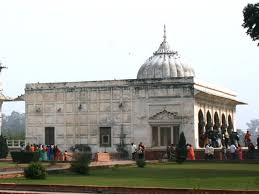
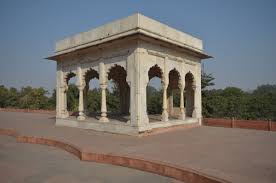
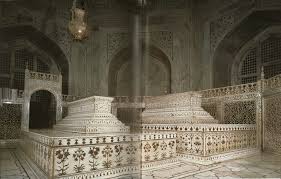
Best Time to Visit : October to February
Address : Netaji Subhash Marg, Chandni Chowk, New Delhi, Delhi – 110006
Timings : 9:30 AM – 4:30 PM, closed on Monday
Entry Fee : INR 35 (Indian Nationals), INR 500 (Foreign Nationals)
The most iconic monument of India has enormous importance. On every independence day the Prime minister of India hoists the Indian National Flag. This icon is also printed on the 500 rs Indian currency.
Click here to know about more forts….
लाल किला: भारत की ऐतिहासिक और सांस्कृतिक धरोहर
परिचय
लाल किला (Red Fort) भारत की एक अत्यंत महत्वपूर्ण ऐतिहासिक और सांस्कृतिक धरोहर है। यह किला भारत की राजधानी दिल्ली में स्थित है और इसे मुगल सम्राट शाहजहाँ ने १६४८ में बनवाया था। यह किला मुख्य रूप से लाल बलुआ पत्थर से निर्मित है, जिससे इसका नाम “लाल किला” पड़ा।
इतिहास और निर्माण
शाहजहाँ ने अपनी राजधानी को आगरा से दिल्ली स्थानांतरित किया और एक नए भव्य किले के निर्माण का निर्णय लिया। इस किले की रूपरेखा प्रसिद्ध वास्तुकार उस्ताद अहमद लाहौरी ने तैयार की, जो ताजमहल के निर्माण के लिए भी प्रसिद्ध हैं।
लाल किले का निर्माण कार्य १६३८ में शुरू हुआ और १६४८ में पूर्ण हुआ। यह किला लगभग २५५ एकड़ क्षेत्र में फैला हुआ है और इसकी दीवारों की ऊँचाई १८ से ३३ मीटर तक है। इसकी मजबूत दीवारें इसे अनेक आक्रमणों से सुरक्षित रखने में सहायक रही हैं।
वास्तुकला और संरचना
लाल किले की वास्तुकला में फारसी, तैमूरी और भारतीय शैली का मिश्रण देखने को मिलता है। इस किले में कई भव्य इमारतें, महल, उद्यान और नक्काशीदार पत्थर की उत्कृष्ट कलाकृतियाँ मौजूद हैं। इसके प्रमुख आकर्षण निम्नलिखित हैं:
- लाहौरी गेट: यह किले का मुख्य प्रवेश द्वार है, जहाँ हर वर्ष १५ अगस्त को भारत का राष्ट्रीय ध्वज फहराया जाता है।
- दीवान-ए-आम: यहाँ सम्राट जनता की समस्याएँ सुना करते थे।
- दीवान-ए-खास: यहाँ सम्राट विशेष मेहमानों और अधिकारियों के साथ बैठक किया करते थे।
- मोती मस्जिद: इसे सम्राट औरंगज़ेब ने संगमरमर से बनवाया था।
- रंग महल: यहाँ शाही महिलाओं का निवास स्थान था।
- हयात बख़्श बाग: इस बाग में सुंदर फूलों की क्यारियाँ और जल संरचनाएँ स्थित हैं।
लाल किले का ऐतिहासिक महत्व
- मुगल साम्राज्य का केंद्र: यह किला मुगल सम्राटों के निवास और सत्ता संचालन का मुख्य केंद्र था। लगभग २०० वर्षों तक यहाँ मुगल साम्राज्य की सत्ता कायम रही।
- १८५७ का स्वतंत्रता संग्राम: ब्रिटिश शासन के खिलाफ प्रथम स्वतंत्रता संग्राम के दौरान लाल किला एक प्रमुख स्थल था। ब्रिटिश सरकार ने अंतिम मुगल सम्राट बहादुरशाह ज़फ़र को कैद कर लिया और किले पर कब्जा कर लिया।
- स्वतंत्रता का प्रतीक: १५ अगस्त १९४७ को पंडित जवाहरलाल नेहरू ने यहाँ तिरंगा फहराकर स्वतंत्रता की घोषणा की। तब से हर वर्ष यहाँ प्रधानमंत्री ध्वजारोहण करते हैं।
वर्तमान स्थिति और पर्यटन स्थल के रूप में महत्व
आज लाल किला यूनेस्को की विश्व धरोहर सूची में शामिल है। भारतीय पुरातत्व सर्वेक्षण (ASI) द्वारा इसकी देखभाल की जाती है। यह एक प्रमुख पर्यटन स्थल है और प्रतिदिन हजारों पर्यटक इसे देखने आते हैं।
लाइट एंड साउंड शो: यहाँ हर शाम विशेष रोशनी और ध्वनि के माध्यम से एक शो आयोजित किया जाता है, जो इतिहास की झलक प्रस्तुत करता है।
निष्कर्ष
लाल किला केवल एक ऐतिहासिक इमारत नहीं, बल्कि भारतीय संस्कृति, स्वतंत्रता और राष्ट्रीय अस्मिता का प्रतीक है। यह किला भारत के समृद्ध इतिहास की गवाही देता है और आज भी देशभक्ति की भावना को प्रबल करता है। भारतीय स्वतंत्रता संग्राम और प्राचीन इतिहास का गौरवशाली प्रतीक होने के कारण लाल किले का महत्व अमूल्य है।

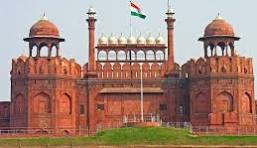




Recent Comments